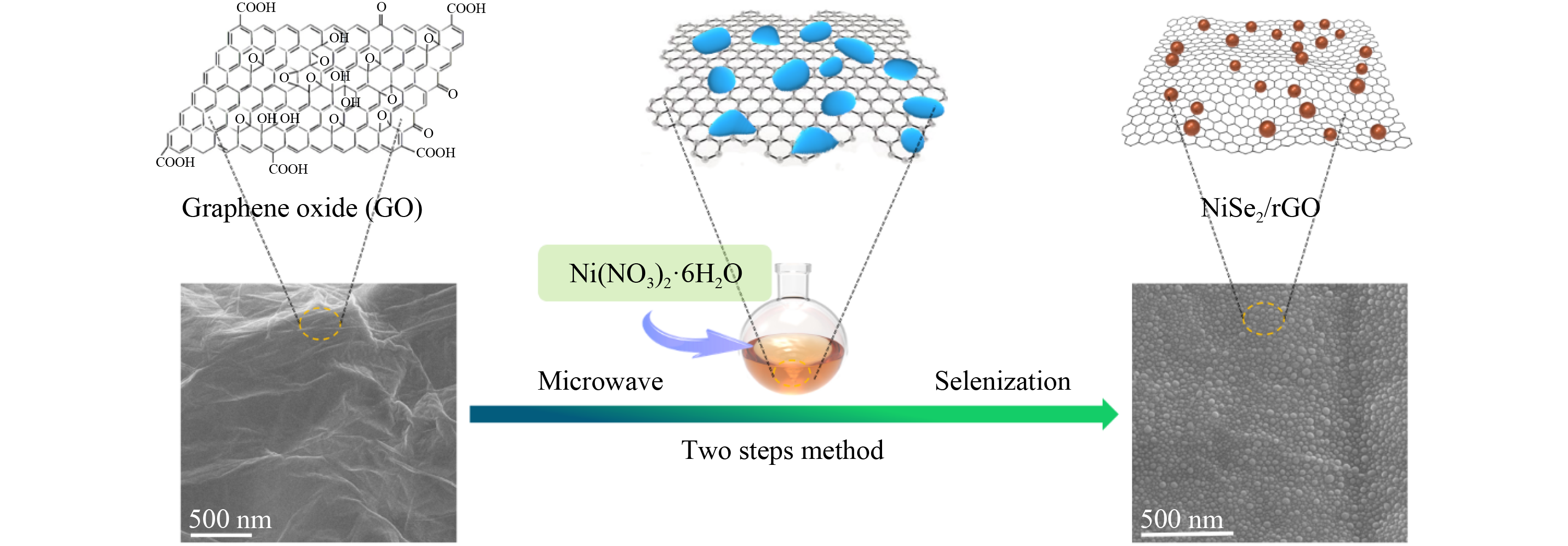

In situ growth of NiSe2 nanocrystalline array on graphene for efficient hydrogen evolution reaction
Received date: 30 Aug 2021
Accepted date: 31 Dec 2021
Published date: 15 Aug 2022
Copyright
Nickel selenide electrocatalysts for hydrogen evolution reaction (HER) with a high efficiency and a low-cost have a significant potential in the development of water splitting. However, the inferiority of the high overpotential and poor stability restricts their practical applications. Herein, a composite nanostructure consists of ultrasmall NiSe2 nanocrystals embedded on graphene by microwave reaction is reported. The prepared NiSe2/reduced graphite oxide (rGO) electrocatalyst exhibited a high HER activity with an overpotential of 158 mV at a current density of 10 mA/cm2 and a corresponding moderate Tafel slope of 56 mV/dec in alkaline electrolyte. In addition, a high retention of electrochemical properties (approximately 100%) was demonstrated with an unchangeable microstructure after 100 h of continuous operation.

Shuai JI , Changgan LAI , Huan ZHOU , Helin WANG , Ling MA , Cong WANG , Keying ZHANG , Fajun LI , Lixu LEI . In situ growth of NiSe2 nanocrystalline array on graphene for efficient hydrogen evolution reaction[J]. Frontiers in Energy, 2022 , 16(4) : 595 -600 . DOI: 10.1007/s11708-022-0827-7
| 1 |
FangZ, PengL, QianY.
|
| 2 |
SunY, Xu K, WeiZ.
|
| 3 |
LiuB, Wang Y, PengH.
|
| 4 |
HuaW, Sun H, XuF.
|
| 5 |
GaoR, Zou J. Towards designing efficient catalyst for hydrogen oxidation reaction. Rare Metals, 2020, 39( 10): 1107– 1109
|
| 6 |
PengX, YanY, Jin X.
|
| 7 |
ChenL, JangH, KimM.
|
| 8 |
JiangH, WangZ, YangQ.
|
| 9 |
FangX, RenL, Li F.
|
| 10 |
MingF, LiangH, ShiH.
|
| 11 |
WangF, LiY, Shifa T.
|
| 12 |
SwesiA, MasudJ, NathM. Nickel selenide as a high-efficiency catalyst for oxygen evolution reaction. Energy Environmental Science, 2016, 9( 5): 1771– 1782
|
| 13 |
KirubasankarB, MurugadossV, LinJ.
|
| 14 |
FangG, WangQ, ZhouJ.
|
| 15 |
YanL, Jiang H, XingY.
|
| 16 |
WangS, HeP, Jia L.
|
| 17 |
FuG, Yan X, ChenY.
|
| 18 |
DongQ, WangQ, DaiZ.
|
| 19 |
WangZ, WuH, Li Q.
|
/
| 〈 |
|
〉 |